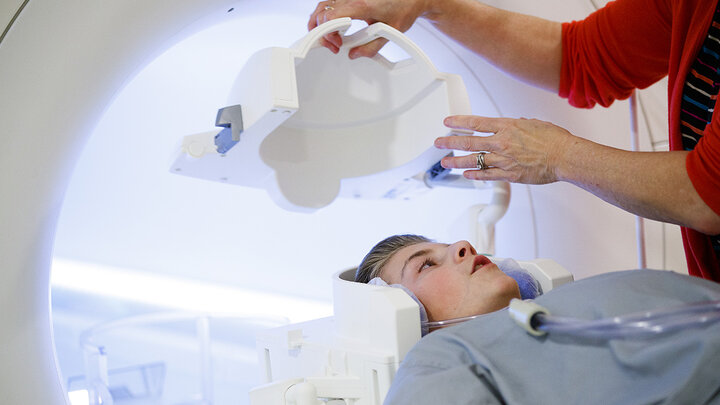The college’s budget is funded from several different sources of funding, each with its own rules regarding expenditure. At a high level, the college’s budget can be considered in four parts:
- State-aided funds: State-aided funds are comprised of tuition funds and state appropriations
- Revolving/Auxiliary funds: Funds earned through the sale of goods or services
- Sponsored Program funds: funds allocated to the college through internal or external grant-making agencies
- Foundation funds: funds donated to the college through philanthropy
The college’s current budget across all fund types is $9,331,219. The vast majority of college funds come from state-aided and foundation funds.
These funds are then further divided into cost centers, which provide additional detail about how the college plans to use the funding. The university employs a smart numbering system that provides information about the funds through the number. All university cost centers are either 10 or 13 digits long and tell you the campus the funds are assigned to, the type of funding it is and the unit the funds are assigned to.
State-aided, revolving and auxiliary funds are designated by 10-digit cost objects.
Sponsored program and foundation funds are designated by 13-digit WBS elements.
State-aided Budget
The largest portion of CoJMC’s budget comes from state-aided funds. The college employs its state-aided budget to cover salary and benefits for faculty and staff, and some core operating expenses in the college. State-aided funds can be used for any allowable expense at the university. During fiscal year 2022, the college’s state-aided budget totaled $6.1 million. 87% of the state-aided budget was allocated to supporting salaries and benefits.
Revolving/Auxiliary Funds
Revolving and Auxiliary funds provide a much smaller proportion of the college’s budget. Some key examples of revolving and auxiliary funds include Jacht agency, student tech fees and course/lab fees. Unlike state-aided funds, which can be applied to any expense college-wide, revolving and auxiliary funds are generally expended to support the program that generated the funds. Revenues earned by the Jacht agency are expended to support Jacht. Course fees are expended in the course that collected the fees. In fiscal year 2022, the college earned $157,947 in revenue in revolving and auxiliary funds.
Sponsored Program Funds
Sponsored program funds come from grants or contracts awarded to the college from internal or external grant-making agencies. Sponsored program funds are generally the most restricted funds in the college. Not only do they have to be expended on the project the funds were awarded to, but they also have to be expended according to the budget submitted as part of the application. Additionally, these funds are generally time-bound and must be expended by a specified deadline or returned to the funder.
The college currently has five projects funded by sponsored program funds totaling $80,500.
F&A
One question that is frequently asked is what F&A is and why it has to be included in external grant applications. F&A stands for facilities and administrative costs. Each year, the university calculates the overhead cost – space, utilities, indirect staffing – required to support grant activities. These costs are then recouped by including a fee, F&A, in grant applications. These funds don’t cover direct project costs but instead are returned to the university to cover these broader, indirect costs. For current university F&A rates, please visit https://research.unl.edu/sponsoredprograms/facilities-and-administrative-cost-rates/.
Foundation Funds
Foundation funds are donations made to the college by alumni, industry partners and other supporters. Donors give contributions to “funds” established at the NU Foundation. Each “fund” is governed by specific rules that determine how the funds can be used. Donors can give to general funds that are available for broad-based expenses or to specific funds that are detailed in how the money can be used. Donations can be made to existing funds, or donors can establish a new fund tailored to their giving preferences. The college currently has 218 separate funds at its discretion. These funds vary from very general uses – any expense that benefits the college – to very specific – must provide a scholarship to a student with financial need from the Fremont area media market.
Foundation funds can further be considered in four groups:
- Student support: Scholarships and other funds that directly benefit students
- Program support: funds that support college operations
- Faculty support: Professorships and other funds that directly benefit faculty activities
- Capital support: Support for the college’s physical facilities and infrastructure
There are two types of foundation funds. Expendable funds are funds that do not generate interest. Once the available funding is spent, it will not be replaced unless future contributions are received. In endowed funds, the initial donation is invested to earn interest. The annual interest is available for expenditure by the college. Each year available funds to spend from the foundation include unused funds from the prior year, interest from endowments and new donations received. Most of the college’s foundation funds are endowed.
The college currently has $2.9 million available to spend in the foundation. However, much of these funds are already committed to future projects including the studio construction, professor stipends, research support and student scholarships for 2022-2023.
The college’s endowed funds are currently valued at a combined $24 million dollars. These invested funds will continue to accrue interest to support future college endeavors.



